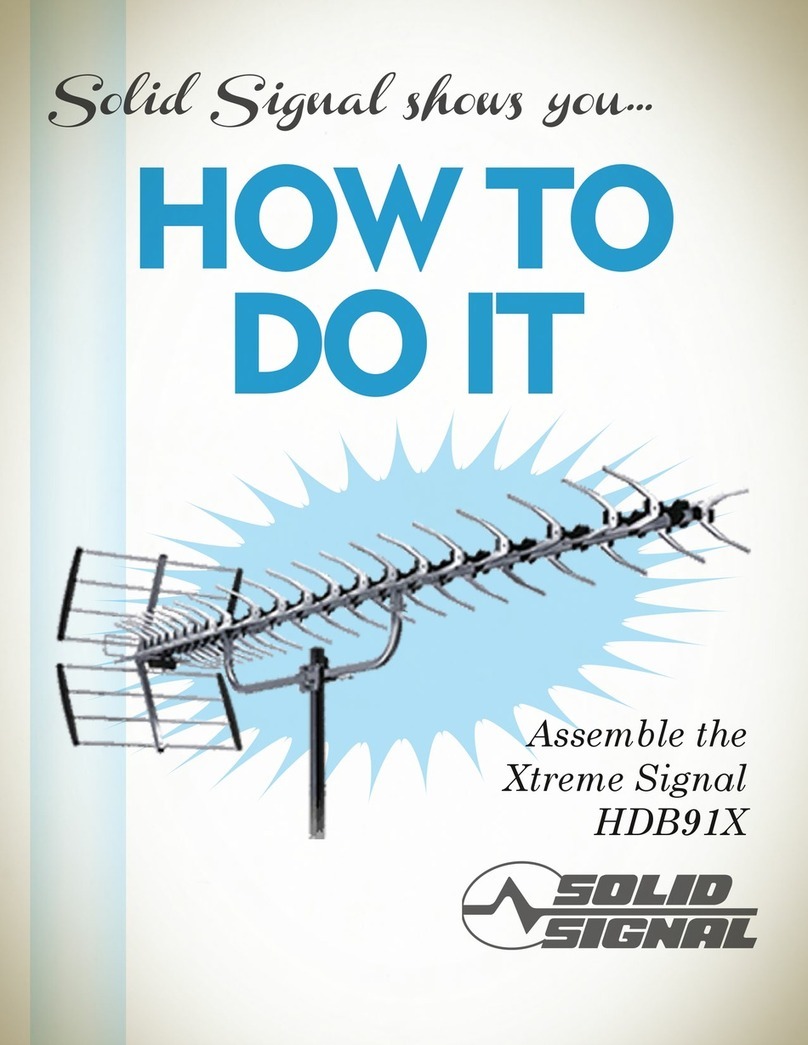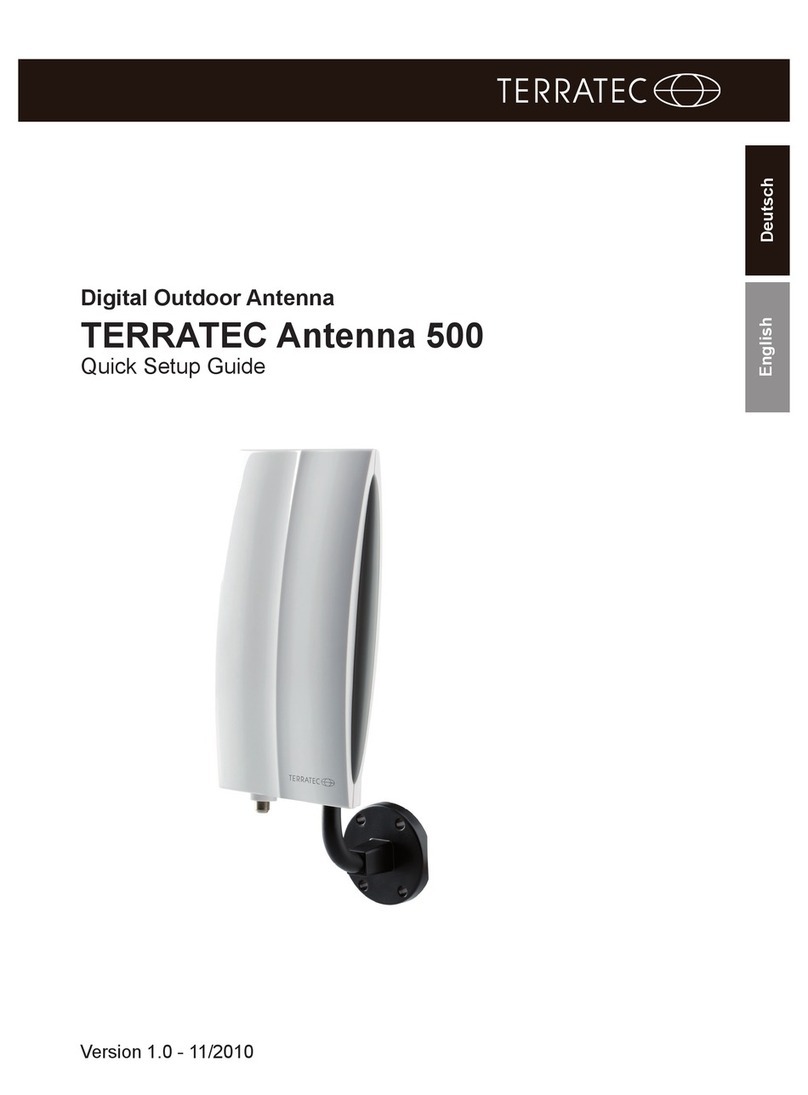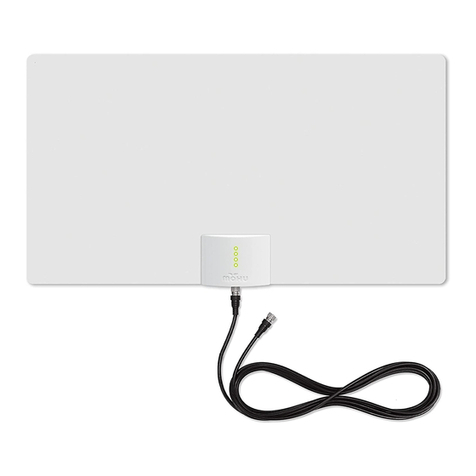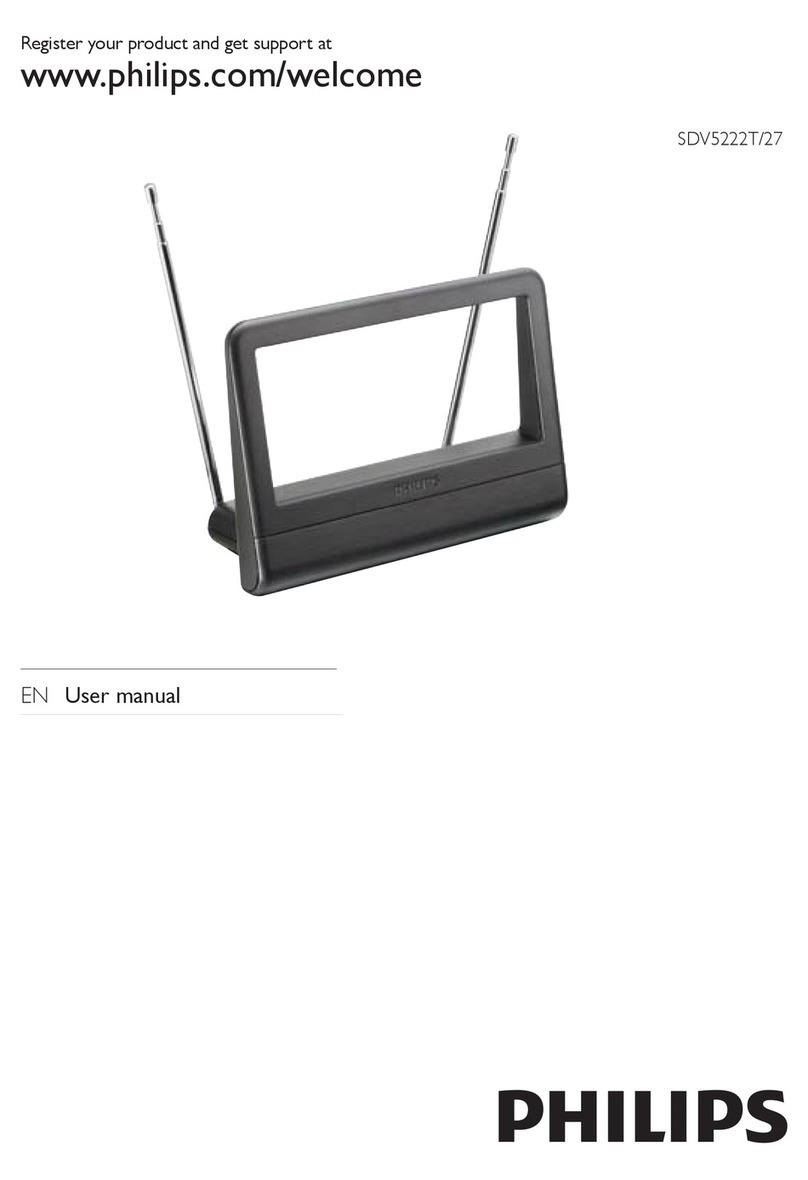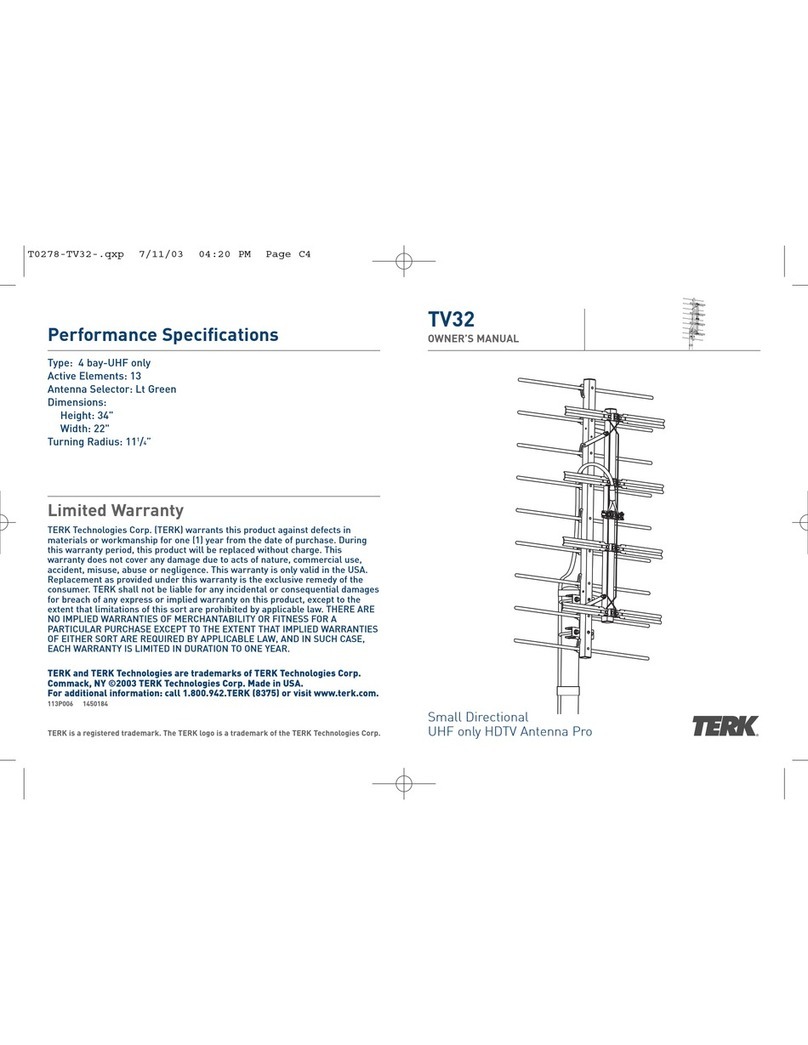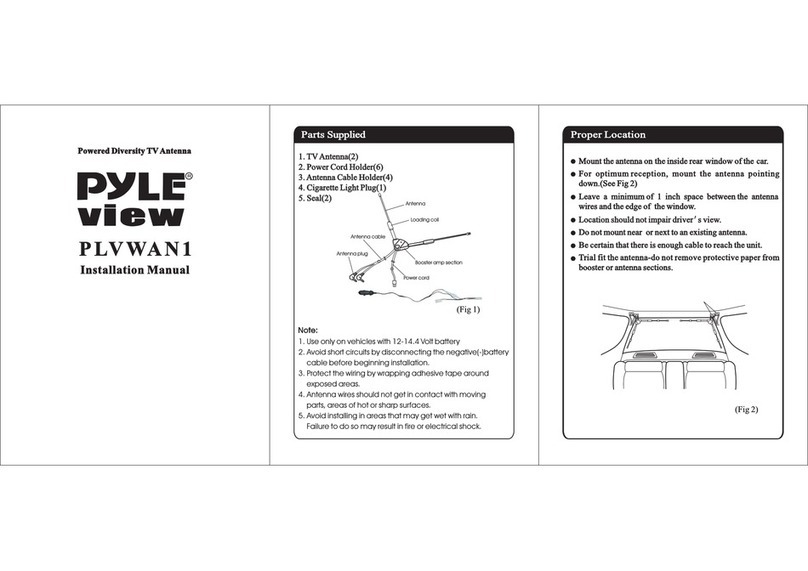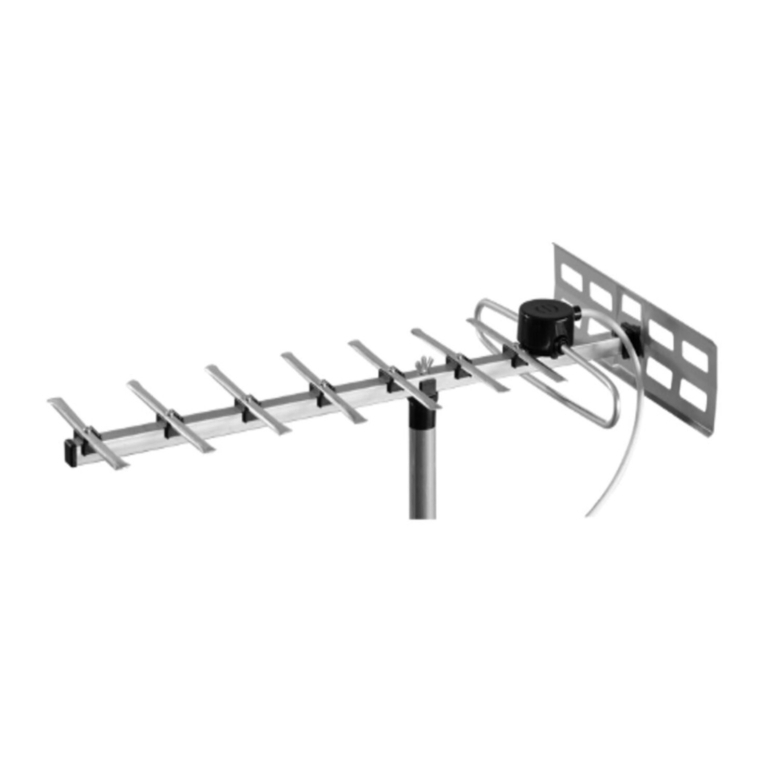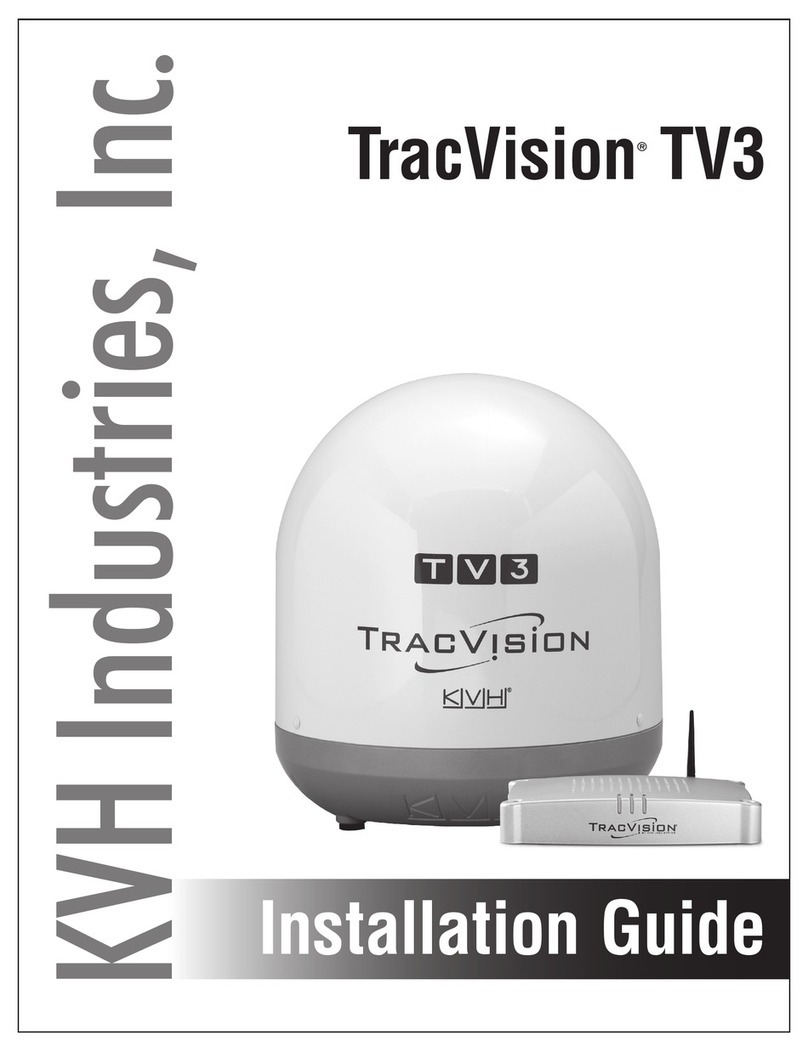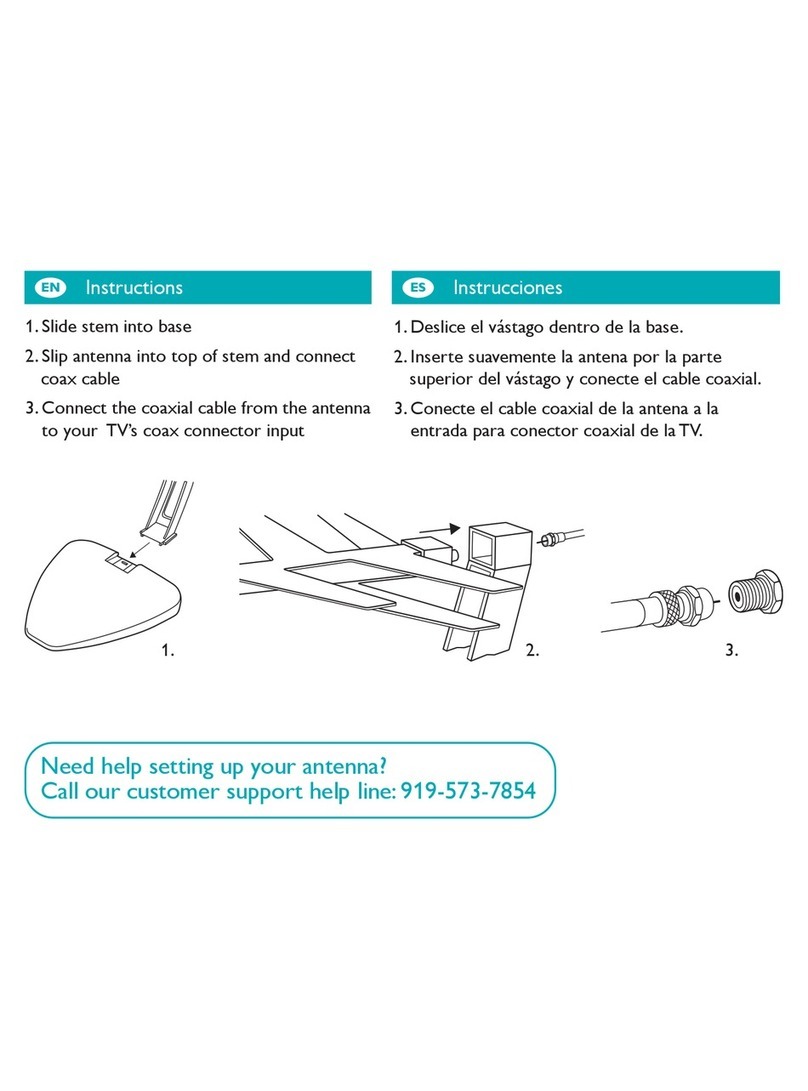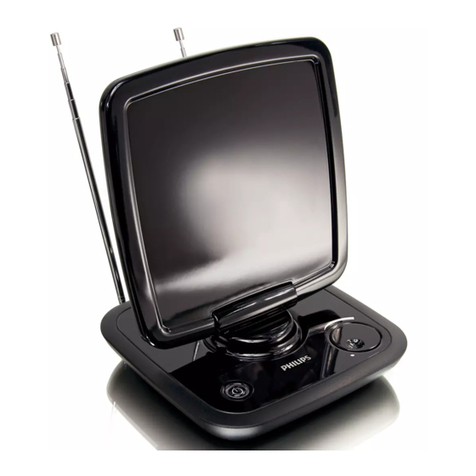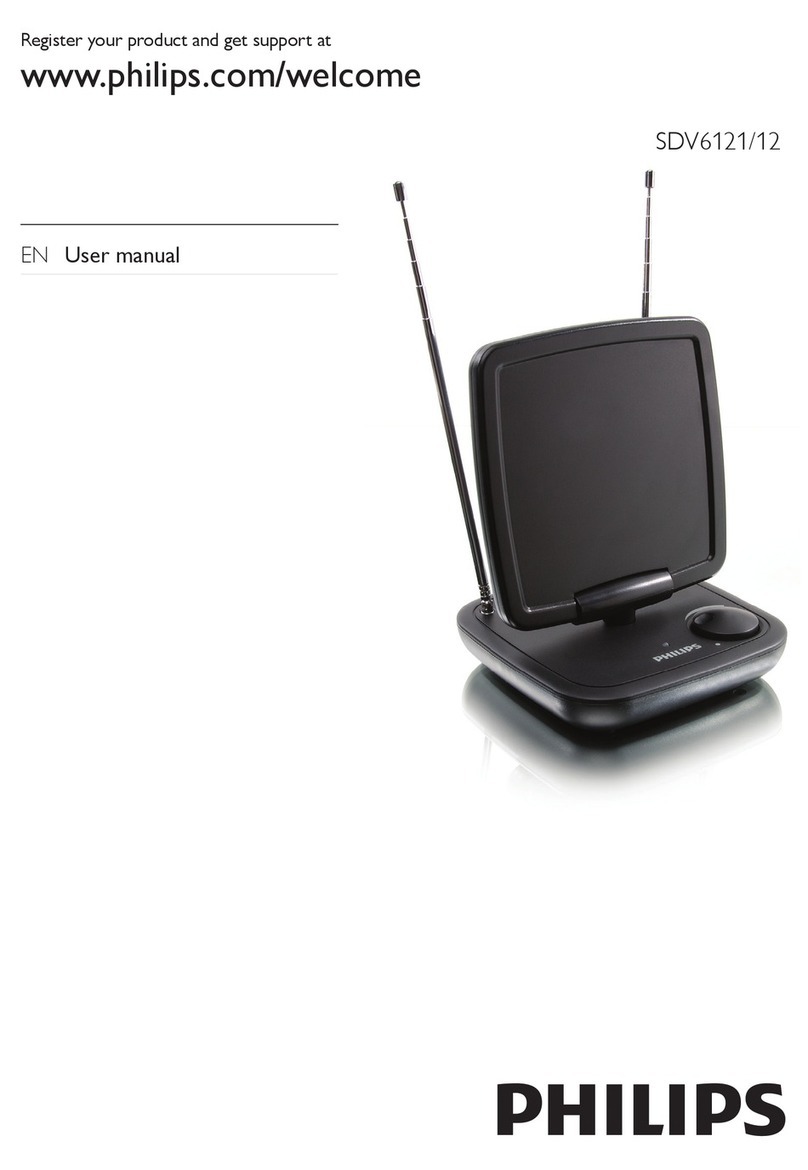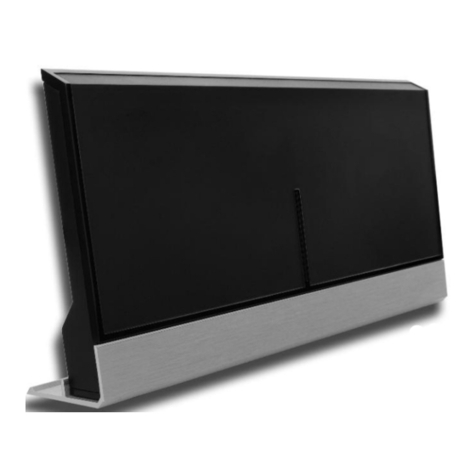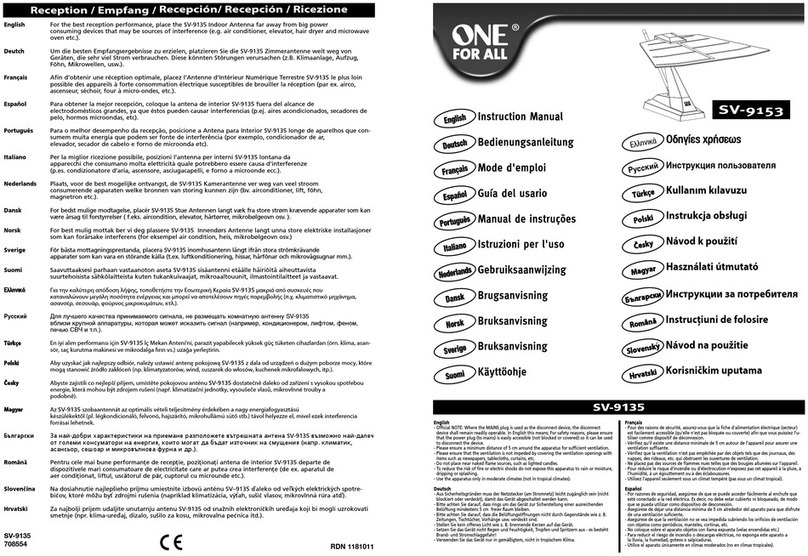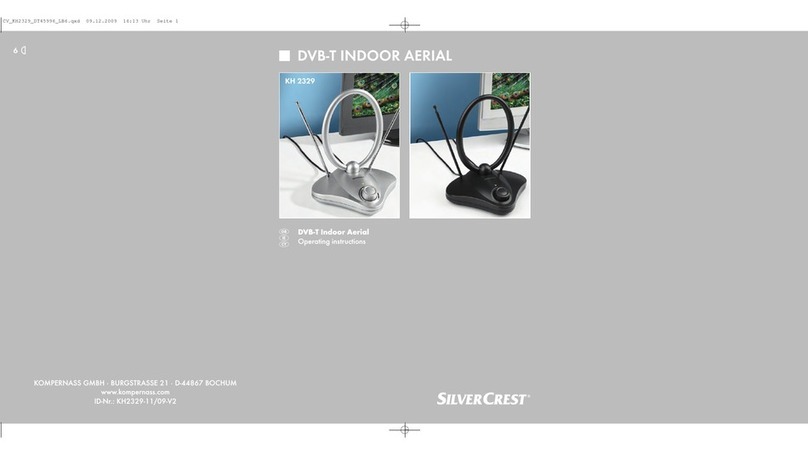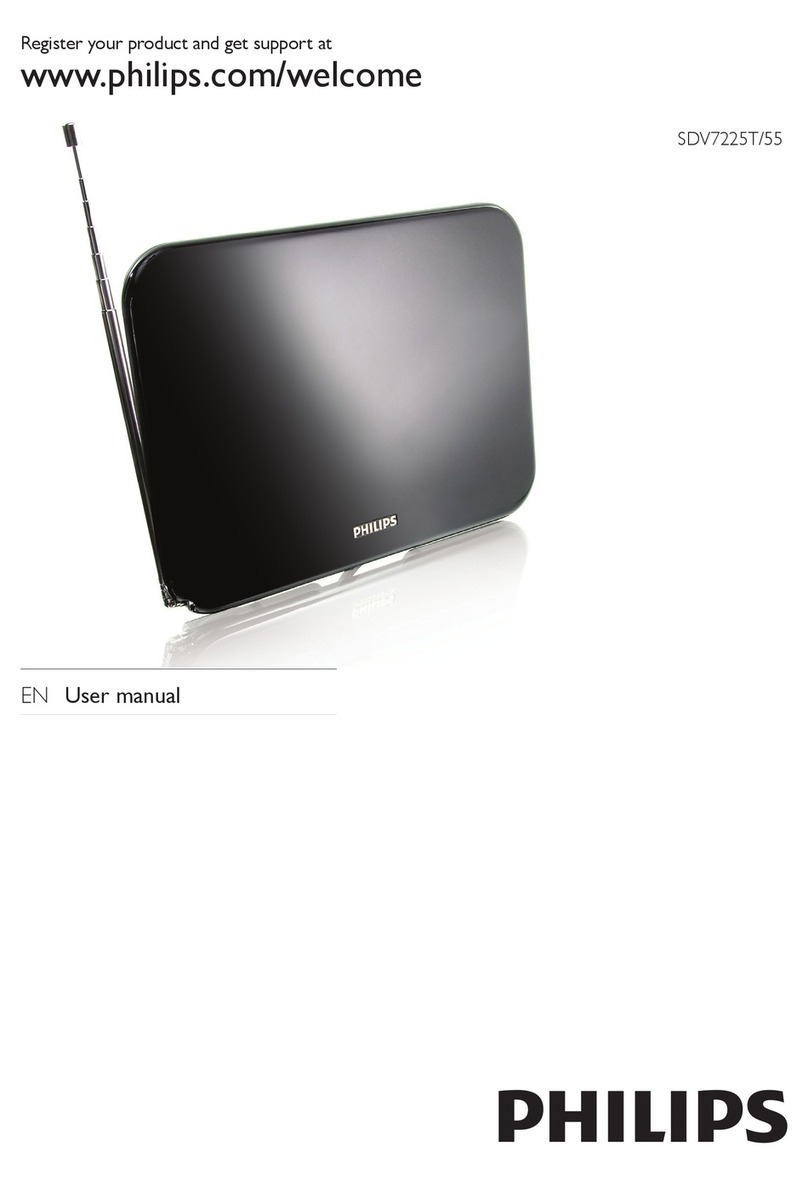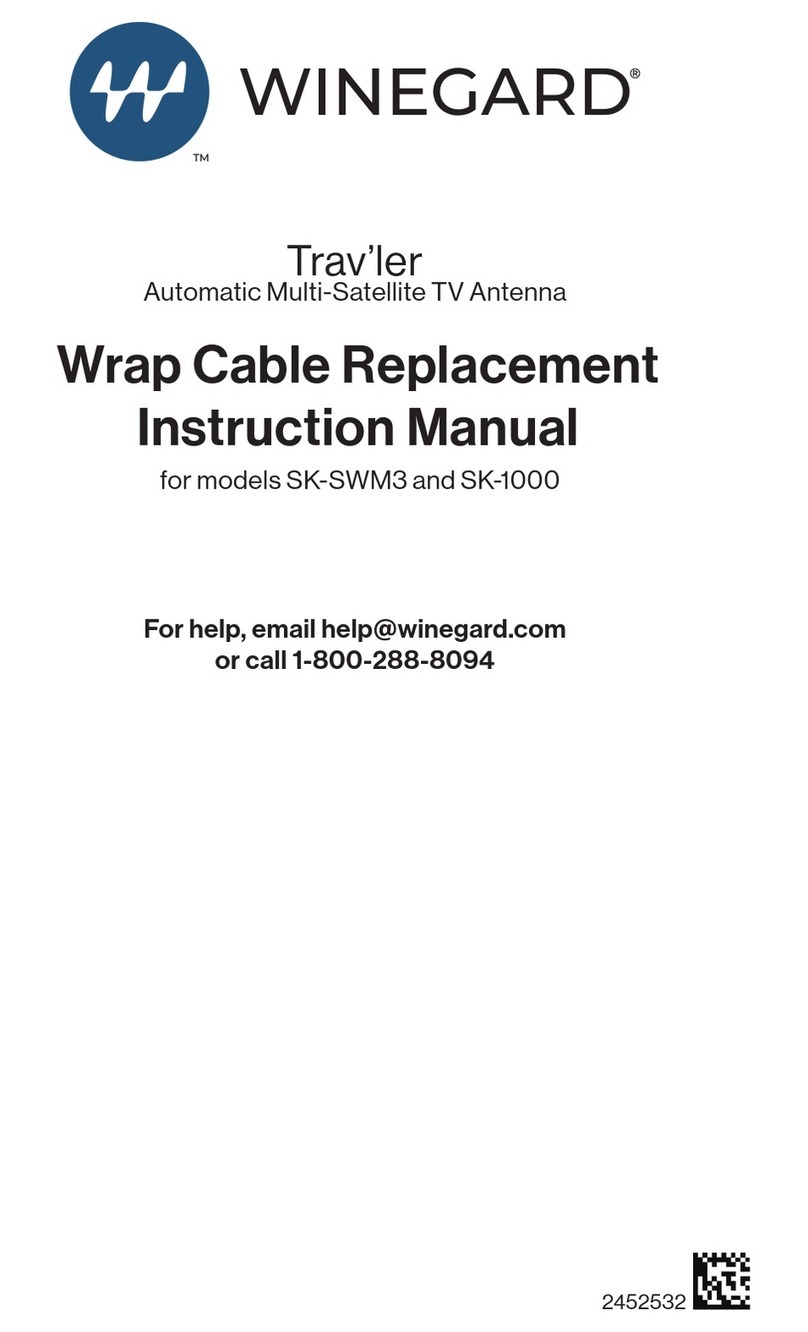Solid Signal HDB8X User manual

Solid Signal shows you...
HOW TO
DO IT
Assemble the
Xtreme Signal HDB8X

2 ©2013, SolidSignal.com Reproduction is permitted provided copyright information is intact.
Your guide to free HDTV
The Xtreme Signal HDB8X antenna from Solid Signal is a great
combination of durability and performance. It’s the right antenna for you if you:
• Need an outdoor antenna for good reception
• Live more than 50 miles away from the broadcast towers
• Watch primarily UHF channels
• Need a small antenna to comply with HOA or condo association rules
• Are comfortable mounting an antenna on a mast
If that sounds like you, there’s no doubt you’ll enjoy great FREE HDTV by using this
durable, economical antenna.
How do I know if I need only UHF channels?
A site like TVFool.com will help you gure out the actual broadcast channels you need.
Remember, since the digital transition, broadcasters use the PSIP system to translate
between actual channel numbers and the channel numbers you see. Anything over
channel 12 is considered UHF.
Before you start:
Make sure that you review local ordinances for grounding and buy the grounding
supplies you need. Also, make sure your ladder is safe and don’t go up on a roof or into
an attic if there is any chance of electricity. Be safe!
Also, remember that all assembly should be done by hand. It should not be necessary
to use tools to tighten anything more than hand tight (except in one case where a
10mm wrench is needed) and if you overtighten the nuts you may risk damage to the
antenna.

3 ©2013, SolidSignal.com Reproduction is permitted provided copyright information is intact.
WHAT’S IN THE BOX
Here’s what you should expect to
see in the box:
Two antenna assemblies.
Two articulating arms (may be
partially assembled)
Instruction packet with one
antenna boot (the other two
should already be attached)

4 ©2013, SolidSignal.com Reproduction is permitted provided copyright information is intact.
The main antenna
is almost completely
assembled when you get
it. All you need to do is
separate the antennas
(the x-shaped part) from
the reector (the bars
with the plastic.)
Find the wingnuts
roughly halfway between
the outer edge of the main
antenna and the center
and loosen them slightly.
Pull the antenna away
from the reector until it
cannot go any further.
Tighten the wingnuts
to keep the antenna
separated from the
reector.
You will need to do this
with both assemblies.
There are two wingnuts
on each assembly.
PUTTING TOGETHER THE MAIN ANTENNA ASSEMBLY

5 ©2013, SolidSignal.com Reproduction is permitted provided copyright information is intact.
ASSEMBLING THE ARTICULATING ARMS (if necessary)
The articulating arms should be
completely assembled when you get
them. However, if they come partially
disassembled, follow these steps to
completely assemble them.
First remove one of the two wingnuts in
the hinge. The hinge is the part closest
to the center. In the photo at the top, it
is on the right.
Then, loosen the other wingnut enough
that you can place the other half of the
arm into the hinge.
In the photo at left, the left side of the
arm goes into the hinge. Hint: when you
have both arms in place, the wingnuts
should be on the same side on both arms.

6 ©2013, SolidSignal.com Reproduction is permitted provided copyright information is intact.
ASSEMBLING THE ARTICULATING ARMS (if necessary)
Put the bolt through the hinge and attach it with a wingnut and a rubber gasket.
Make sure the hinge moves freely, then straigthen it out and tighten the wingnuts
nger tight.The nal arms should look like the photo above.
Note that all the wingnuts on the edges are facing down.

7 ©2013, SolidSignal.com Reproduction is permitted provided copyright information is intact.
ATTACHING THE ARMS TO THE ANTENNA ASSEMBLIES
Start by laying out the antenna
assemblies and the arms. Lay the
antenna assemblies upside down, so the
black plastic boxes in the center of each
assembly are facing down. Lay out each
assembly so that the cables are toward
the bottom.
Then lay out each arm. One arm has a
combiner as shown at left.
The arm with the combiner goes at the
bottom of the antenna, and the combiner
goes on the underside (so that when
everything is assembled, it will be at the
front.) Also, the wingnuts at the edges
should point toward the bottom.
Take some time to make sure that
everything is facing the same way, This
will save you a lot of time later.

8 ©2013, SolidSignal.com Reproduction is permitted provided copyright information is intact.
ATTACHING THE ARMS TO THE ANTENNA ASSEMBLIES
Assemble one side at a
time. Start by removing
the outer wingnut
and loosening the one
next to it. You should
be able to loosen the
outer clamps enough to
clamp onto the antenna
assembly then gently
close the clamps around
the antenna assembly.
One arm attaches at the
bottom, and one arm
attaches at the center.
It may take a little bit
of work to get the bolt
behind the black plastic
box and through the
clamp.
Both arms should
attach to the antenna
assembly as shown
below. Once you have
one side done, start on
the other side. It may
be helpful at this point
to loose the hinges so
that one assembly sits
on a at surface while
you attach the arms
to the other assembly.
If you do that, tighten
the hinges back up so
that it’s easy to lift the
antenna when you are
done.

9 ©2013, SolidSignal.com Reproduction is permitted provided copyright information is intact.
FINAL ASSEMBLY
Turn the assembly right side up so you can see the cables and the combiner
First, snake the cables through the criscrossing metal tubes and clamp each one
down into the plastic cable clamp.
Then, connect the cables from each antenna assembly to the top of the combiner. At
this point you may choose to connect your antenna cable, or you may wish to wait
until the antenna is mounted on the roof. When you do attach the antenna cable,
thread it through the waterproof boot and attach it to the bottom of the combiner.

10 ©2013, SolidSignal.com Reproduction is permitted provided copyright information is intact.
MOUNTING AND ATTACHING THE CABLE
As you look at the antenna, you will
see that the mounting point has an
adjustment to help you keep the antenna
pointed properly. In most cases this
should not be used. Instead, level and
plumb the mast properly.
Mount the antenna on the mast by
sliding it on so that the rear mounting
clamps can bite into the mast. Tighten
the wingnuts evenly. It might help to
start with the top clamp, get it nice and
snug before proceeding to the bottom
clamp.
Once the clamps are tight enough to
hold the antenna, you can aim the whole
antenna by swiveling it on the mast.
You can also loosen the wingnuts at the
hinges and point each half of the antenna
separately. Remember to tighten the
wingnuts when you are done.

11 ©2013, SolidSignal.com Reproduction is permitted provided copyright information is intact.
FINISHING UP
For added stability, clamp the cable to the body of the antenna by loosening the
wingnut at the bottom of the antenna enough for the cable to pass through. Try not
to crimp or damage the cable.
Find a grounding block and attach the antenna cable to it. Run the cable from the
grounding block into the house.
Finally, use your TV’s menu to scan for off-air channels.
Here’s a video from our Xtreme Signal team with
even more installation tips!

©2013, SolidSignal.com Reproduction is permitted provided copyright information is intact.
SolidSignal.com is your source
for DIRECTV equipment, supplies,
and support. We have over 10
years’ experience in installing and
supporting satellite equipment. Our
technical staff is ready to answer
all your questions!
visit SOLIDSIGNAL.COM
for the best selection of
equipment and supplies
for the high-end installer
or do-it-yourselfer!
FORUMS.SOLIDSIGNAL.COM
is your source for
24-hour support!
BLOG.SOLIDSIGNAL.COM is
your information destination
for news, reviews, and tips!
Other manuals for HDB8X
1
Table of contents
Other Solid Signal TV Antenna manuals
